MARC: A SPIRIT FOR PEOPLE WHO LIKE IT ROUGH
by Susan Manfull
Marc (pronounced mahr and rhymes with car, like one a Bostonian would park) is not for everyone. Perhaps it is not even for most people, which works well—keeping the universe in balance—as the production of this spirit is so small that most of it never leaves the immediate area where it is produced. I happen to be an enthousiaste passionnée about this style of pomace brandy (that others would just as soon relegate to moonshine).
I picked up a bottle of Marc de Provence, produced by Aureto a few years ago, and despite the miserly portions I doled out to guests (and myself), it didn’t last long. It’s the kind of marc that might shift the balance of supply and demand.
Almost exclusively served as a digestif, marc is a delicious way to consummate a long dinner, especially following certain desserts (e.g., chocolate and caramel) and strong cheeses. Some people prefer it with their espresso. In the morning, this is referred to as a “corrected coffee,” although I draw the line at 2:00 a.m. and cork the bottle—still the flask it was drained quickly.
Eau de vie de marc (its full name) is distilled from what is left over after pressing the grapes used in wine production—the skins, pulp, seeds, and sometimes stems collectively called pomace—and then aged in oak barrels, typically 10 to 20 years, giving the spirit its typically orange-ish caramel color. (The marc in Alsace, however, is clear.) The average Alcohol By Volume (ABV) is around 43%, a beverage clearly not for the faint of heart.
The first distillation of French wine by-products dates back to the 13th century when Arnaud de Villeneuve (1238-1311), a doctor and theologian in Montpellier, had the idea. Although he might have more aptly named it “eau de feu” (water of fire), considering the medicinal properties he attributed to it, he called it “eau de vie” (water of life). He wrote, “This product can cure poisoning, clear the chest, prolong life and maintain youth.”
Throughout the Middle Ages, eau-de-vie was made in stills located in pharmacies, where it was also sold. In 1831, it was decreed that the distiller must own the vineyard (or orchard) from which the products for eau-de-vie distillation come. Traveling distilleries became a popular business. Of course, enterprising folks continued distilling their neighbor’s marc (confining their distilling to those on which fragrant lavender was also distilled, hiding the pungent smells of alcohol distillation.)
In the early 20th century, when wine overproduction reached a crisis, this law was relaxed and distillery cooperatives were built. The earliest such cooperatives in Provence were built in the 1930s in St-Maximin (in the Var) and in Coustellet (in the Vaucluse).
In 1942, Marc de Provence was established as its own (regulated) appellation, regulating the production of eau-de-vie of marc throughout Provence-Alpes-Côte d’Azur and in two departments from the Rhône-Alps region. Today, about 170 hectoliters of eau-de-vie de marc is produced annually in all of Provence plus the two outside departments; by comparison, the Côte de Provence appellation, alone, produces 924,000 hectoliters of wine each year
Cognac and Armagnac, although also distilled from wine, are not rough around the edges like marc. Even Calvados, distilled from cider, is usually less rustic than marc (although, in Normandy, I’ve been served Calvados, undoubtedly distilled in a neighbor’s tub, that I feared would be the last drink I swallowed). Grappa, Italy’s version of marc, is increasingly popular and more widely available outside the country’s borders.
Marc can be made from the pomace from white-wine grapes, red-wine grapes or those combined to make rosé. The marc I enjoyed so much from Aureto is produced from Syrah and Caladoc grapes. The ABV is 45%
On my last trip to Provence, I had planned to return to Cave Aureto, part of La Coquillade Village, a Relais & Château property in the Luberon Natural Forest, to replenish my marc supply. Instead of traveling north from Lourmarin, I found myself heading southeast to La Londe-les-Maures, on the Mediterranean Coast, to visit Clos Mireille, one of three Domaines Ott properties. There in the tasting room, at the conclusion of an immensely interesting tour with Adelaïde Beaudonck, I saw a bottle of marc. Produced by Château de Selle, the first property Marcel Ott purchased, it is the only Ott property that produces a marc. Two, in fact.
Of course, being Domaines Ott, this is not just any old marc. Certainly, one would not flambé her quail with this marc. It is called a “Vieux Marc de Rosé” meaning that it made from the skins of grapes used to produce rosé. They are slowly fermented to encourage “a very distinct marc character over the distillation process” and then aged in oak barrels for ten years. Two different batches are produced, one with an ABV of 46% and another with an ABV of 52%.
Neither marc is exported. Already filled with anticipation, I was compelled to lug home at least one bottle. (Who wouldn’t be?) I had the occasion to open the handsome bottle a couple of months ago after a long dinner on a cold winter’s night. It was worth the weight in my suitcase and worth the wait for the right occasion.
The color is a lovely amber, suggesting the rich flavors that followed. On the nose, there are earthy floral notes, hints of vanilla and nougat, and a trace of pepper. On the palate, I detected honey against an oaky backdrop. My husband noted toasted coconut on the nose and an earthy version of Bananas Foster as he sipped it. Domaines Ott’s marc is an immensely pleasant experience to sip as eau de feu mingles with eau de vie, finally settling à la vie. Just enough roughness to intrigue.
I’ve been carefully dispensing tiny pours since then, savoring every drop as if I might never put my hands on another bottle. However, I will be there again this summer and I suspect another bottle might find its way into my bag, reaffirming my faith in a universe that supplies when demanded. Or something like that. I will ponder that subject with a glass of marc.

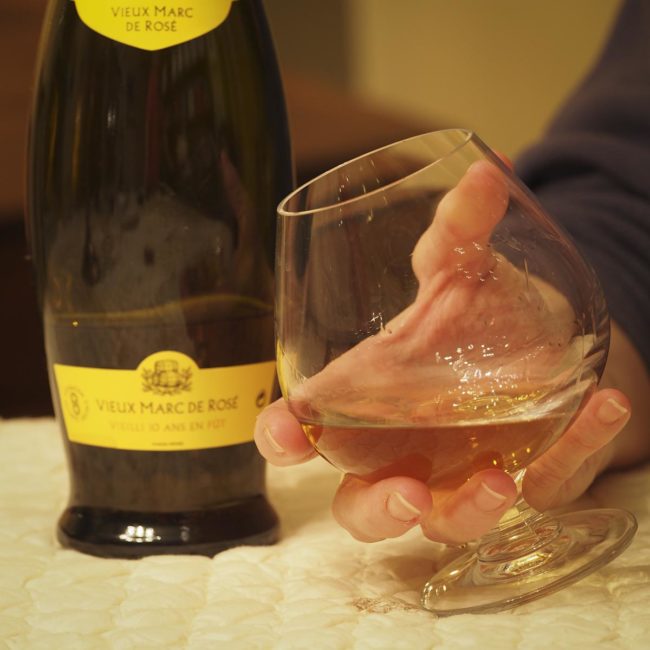
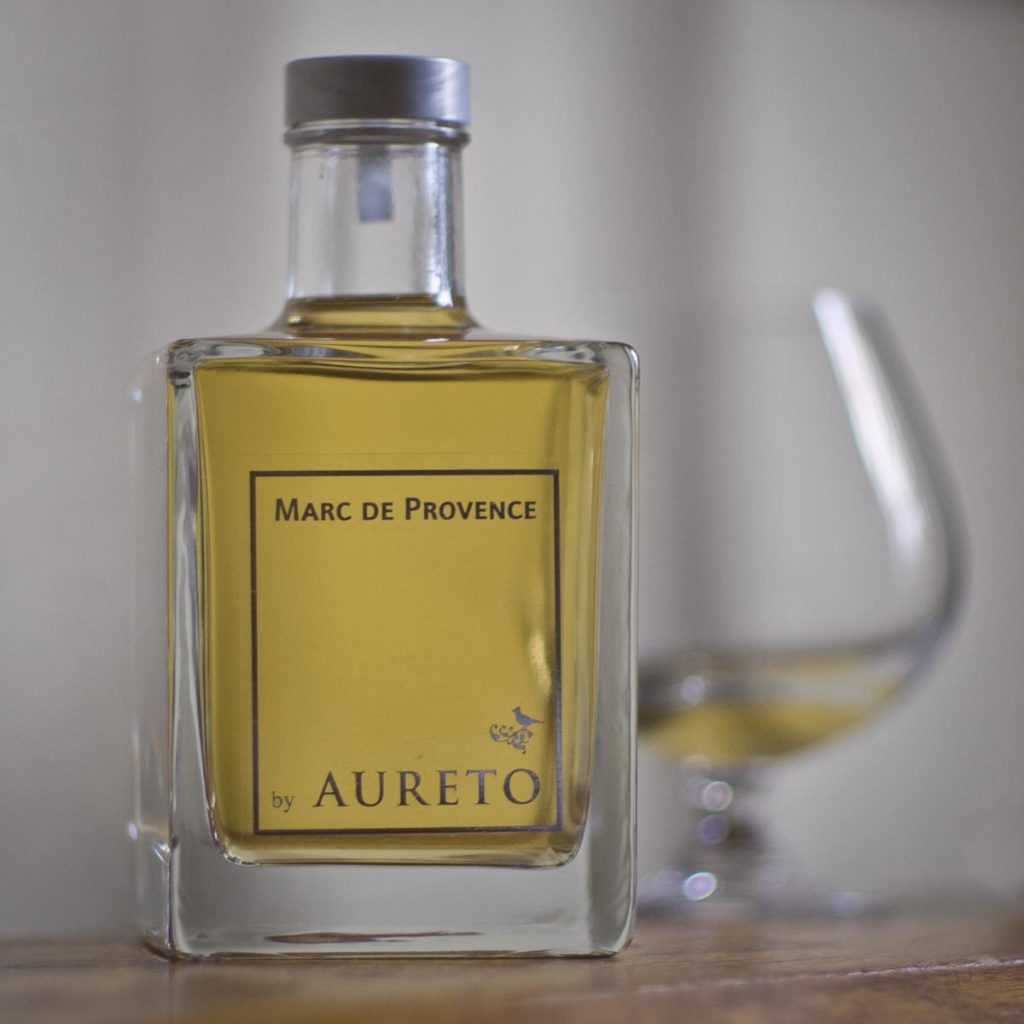
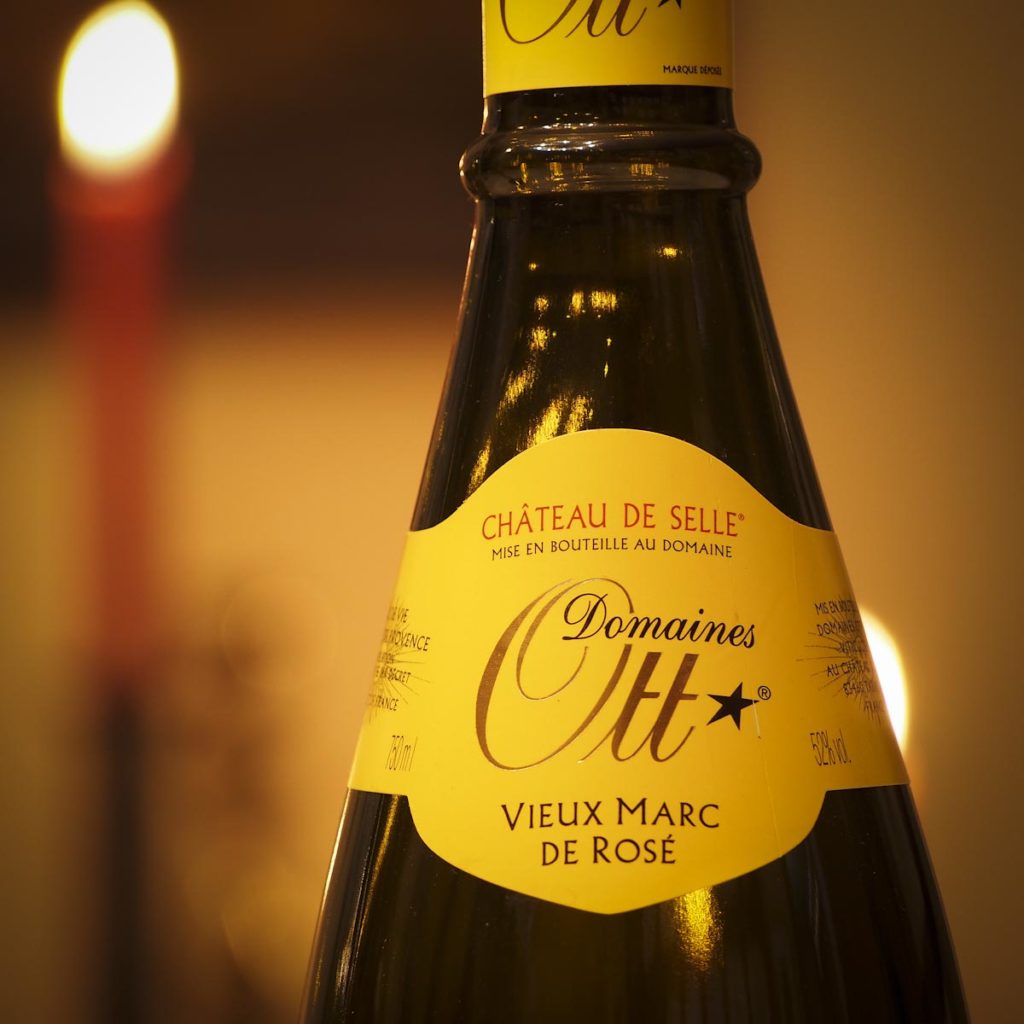
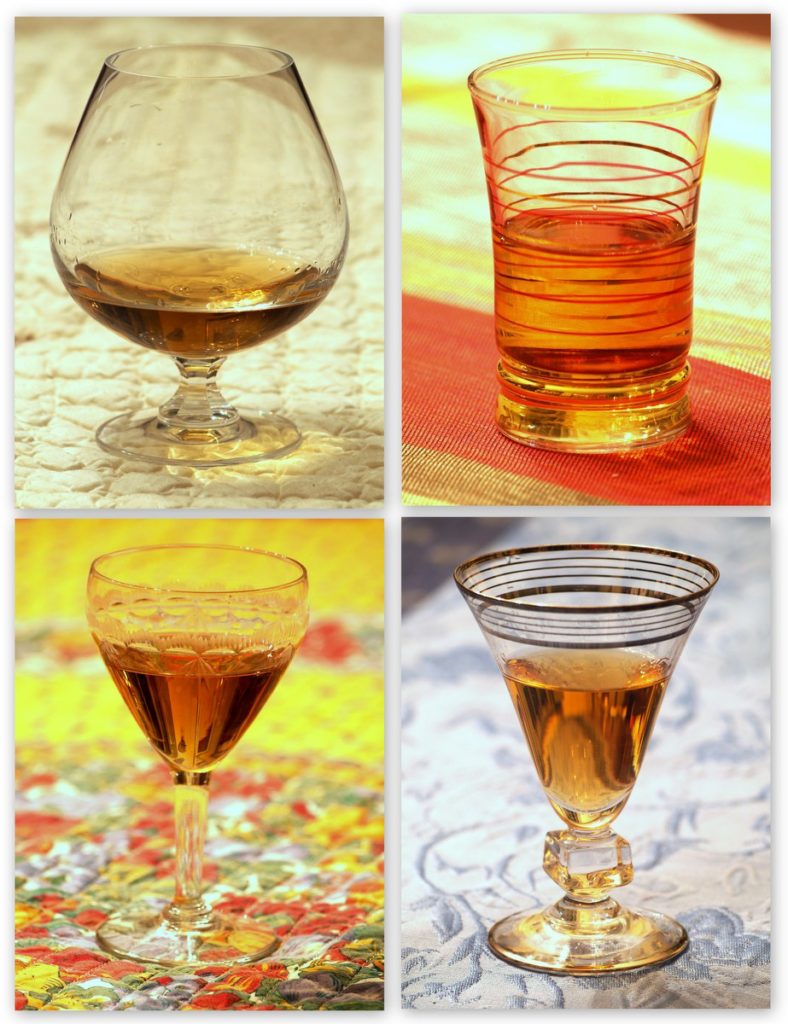
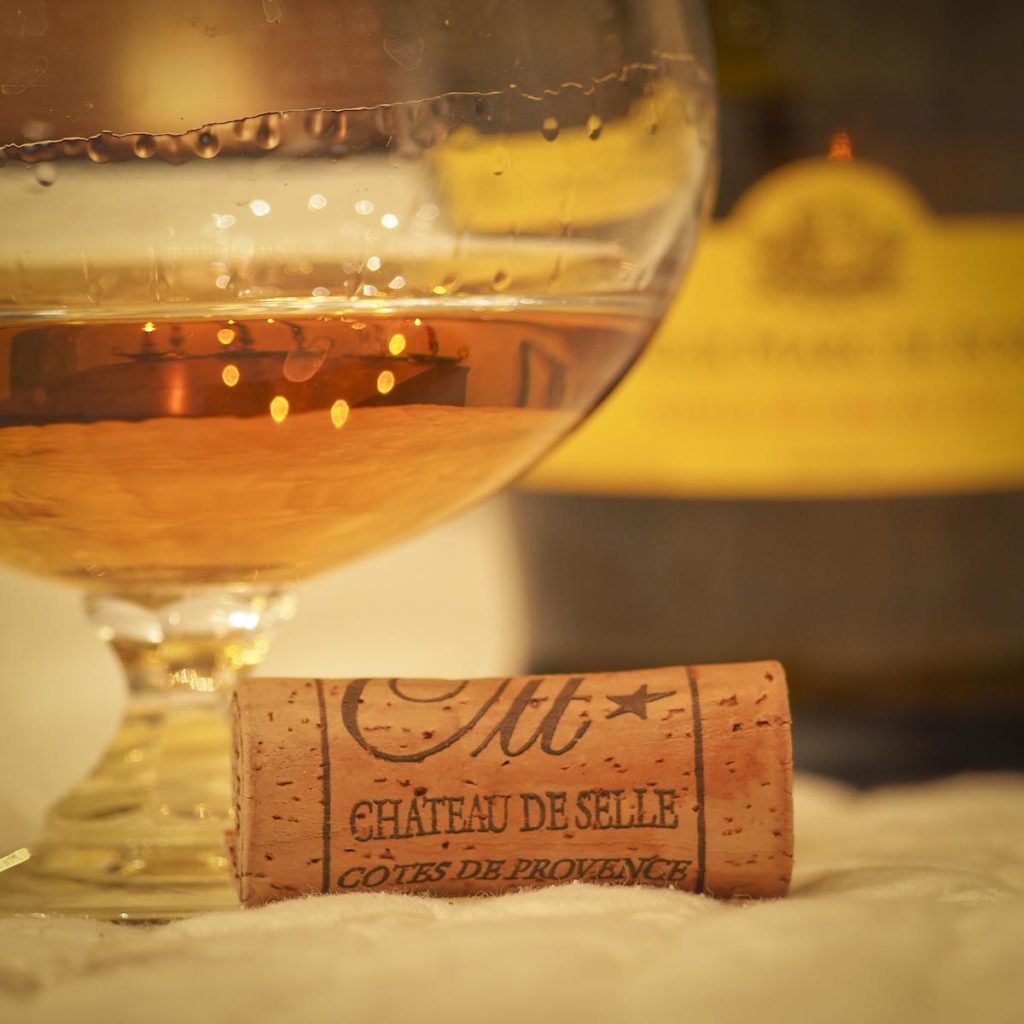
Loved the post. How much will a bottle of Ott marc set me back?
Oh, so nice to hear from a fan…even more importantly, it’s nice to know there is a fan! A 750ml bottle of the Vieux Marc Rosé 52% ABV lists for 44.53 euros and the 46% ABV for 39.90 euros. At the cave, my receipt indicates I paid 37.11 euros (plus tax) for the higher octane version. Hope you find yourself in the neighborhood!
This does sound like quite a bottle to own! Perhaps when I am there, we can make my recipe for crêpes Suzette and do a pairing test? I think they would be lovely together… À bientôt, ma chère amie! David
Just in the last few months I’ve taken to an occasional sip of grappa. It sears its way nicely through the aftermath of a too-rich dinner. Now I know that grappa and marc are roughly equivalent. Thanks for the informative article, and the gorgeous photographs!
Hi Susan,
Loved your narrative and your knowledge of marc vieux. I was given a present of “marc vieux du Pere Dominigue”. I tried to source information on it, but failed. Have you heard of it? I believe it to be rather old as there is no UPC to help my investigation.
Great article. Just had my first glass of vieux marc in Châteauneuf-du-Pape and was interested to learn more about the spirit. It’s strong but I could see trying more. It’s intriguing!
Wonderful article! I was reading M.F.K. Fischer’s “The Standing and the Waiting” — from “Serve it Forth”– in which contrasting types of marc (a mediocre one and a very special one) are pivotal. Your explanation helped my understanding of the significance (and poignancy)of the appellation in the story..and having tasted Grappa and marveled at it’s gritty sweetness, I could imagine the marc..
Archie McNally, in Lawrence Sanders writings, was always a fan of marc, An interesting character throughout the series.
I just found 2 sealed bottles VIEUX MARC DE JEAN LOUIS on the bottom it reads Jean Louis Palaz dated 1974 I BELIEVE its this type of liquor. Do you know anything about it?
Swiss wine?
I don’t drink and couldn’t begin to appreciate what you’re sharing—but I did read Peter Mayle’s A Year in Provence (1989), and they savored marc with practically every meal. I just shared that story with dear friends whom we just bumped into at a restaurant, and found this article while trying to explain a wine that they’d never heard of. Such an interesting read! Thank you, JRF
My first encounter with marc was after dinner with some locals in Burgundy. It was apparently made with pears not grapes, and was wonderful. They said it was made from the leaving of the fruit, and by law householders were no longer allowed to make it themselves, but could give it to a sort of traveling distiller who (for a price) would make marc out of their leavings and sell it back to them. I doubt this was aged 10 years! The only other time was at a cafe in Paris, and I don’t know the provenance. In any case, memorable.